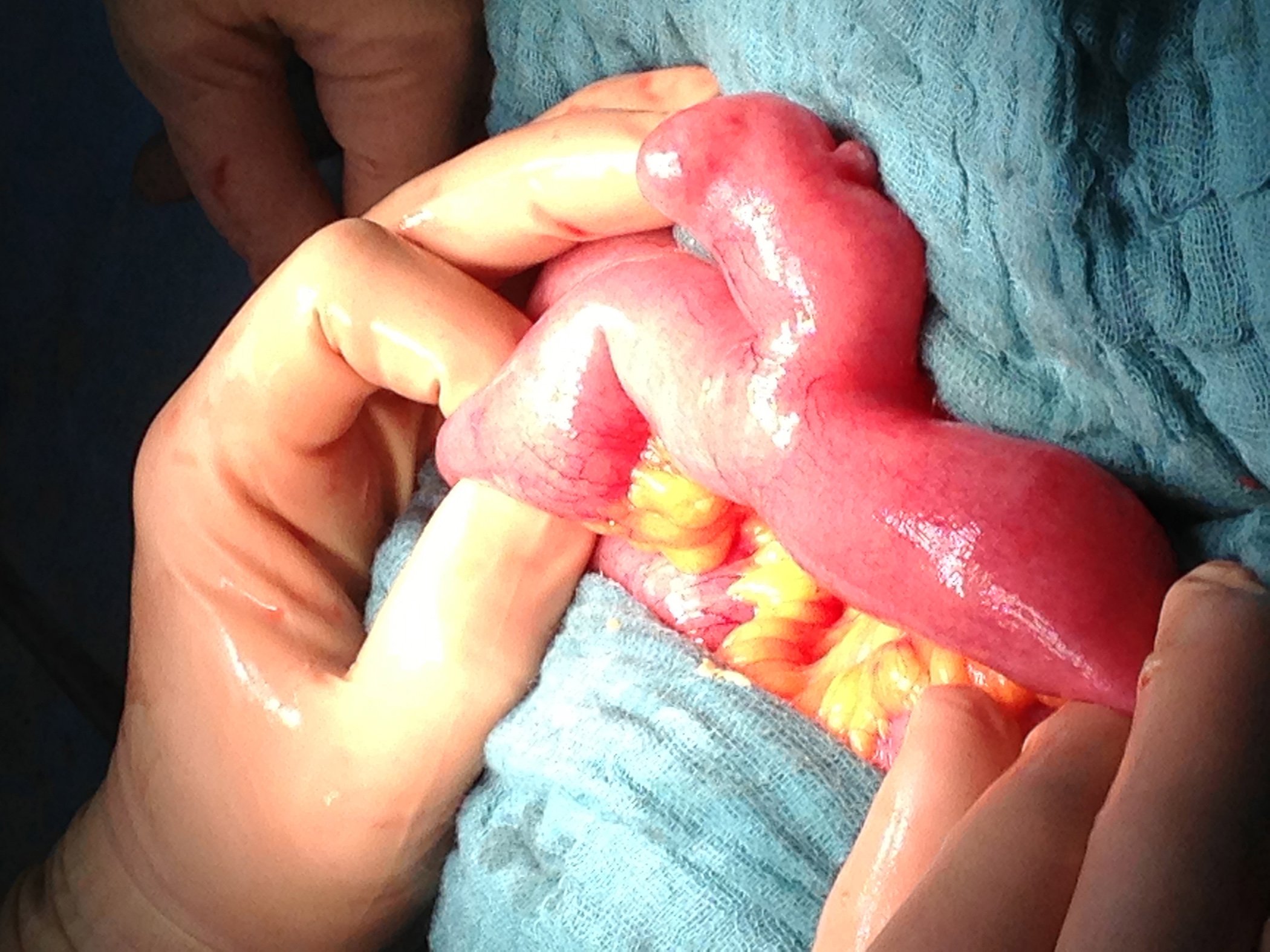Gestational diabetes mellitus is a common pregnancy complication that is associated with a number of complications for both the fetus and the mother. Whether treating this form of diabetes before the 20th week of pregnancy improves the health of mother and child is unclear. An international group of physicians has conducted a randomized, controlled trial to investigate the benefits of such treatment.
Gestational diabetes, a common complication of pregnancy, is associated with an increased risk of pre-eclampsia, obstetric interventions, shoulder dystocia, birth trauma and neonatal hypoglycemia, among others. Screening and treatment for gestational diabetes in the 24th to 28th week of pregnancy is recommended.
For women who are at high risk of diabetes, a test is recommended at the beginning of pregnancy to rule out undiagnosed diabetes. If blood glucose levels are elevated but below the levels diagnosed for diabetes in non-pregnant adults, early gestational diabetes is assumed and treated. However, there are no data from randomized, controlled trials that prove a benefit of such treatment.
An international group of researchers led by Dr. David Simmons from the School of Medicine at Western Sydney University in Australia conducted a randomized controlled trial to assess pregnancy outcomes after treatment for gestational diabetes was initiated before 20 weeks’ gestation. They compared these outcomes with deferred or no treatment, which depended on the results of a repeat oral glucose tolerance test (oGTT) at 24 to 28 weeks’ gestation [1]. The study was conducted in 17 hospitals in Australia, Austria, Sweden and India.
Early therapy for abnormal blood glucose levels
Of the 43,721 women screened for eligibility, 802 were finally randomized – 406 (50.6%) were assigned to the immediate treatment group and 396 (49.4%) to the control group. After excluding women with early pregnancy loss, the final sample for analysis comprised 793 women (98.9%). The baseline characteristics of the women in both groups were similar, with the exception of a higher percentage of women in the control group who had given birth in the past.
The initial oGTT was performed on average after 15.6 weeks of pregnancy; in 23.2% of the participants before the 14th week of pregnancy. When the oGTT was repeated in weeks 24 to 28, 67.0% of the women in the control group were again diagnosed with gestational diabetes. A larger percentage of women in the immediate treatment group than in the control group received insulin (58.1% vs. 41.4%) or metformin therapy (23.6% vs. 10.4%).
Dr. Simmons and colleagues randomly assigned women between 4 weeks and 19 weeks and 6 days gestation who had a risk factor for hyperglycemia and a diagnosis of gestational diabetes in a 1:1 ratio to either immediate treatment or deferred or no treatment, depending on the results of the oGTT at 24 to 28 weeks gestation (control). The study included three primary outcomes: a composite of unfavorable neonatal outcomes (birth at <37 weeks’ gestation, birth trauma, birth weight ≥4500 g, respiratory distress, phototherapy, stillbirth or neonatal death, shoulder dystocia), pregnancy-related hypertension (pre-eclampsia, eclampsia or gestational hypertension) and neonatal lean body mass.
Respiratory complications reduced
An adverse neonatal event occurred in 94 of 378 women (24.9%) in the immediate treatment group and in 113 of 370 women (30.5%) in the control group. Pregnancy-related hypertension occurred in 40 of 378 women (10.6%) in the intervention group and 37 of 372 women (9.9%) in the control group, and the mean lean body mass of the newborn was 2.86 kg in the immediate treatment group and 2.91 kg in the control group (Fig. 1). No differences were observed between the groups in terms of serious adverse events related to screening and treatment.
The incidence of composite adverse neonatal events (first primary endpoint) was significantly – albeit modestly – lower in those women who were treated immediately than in those who were treated later or not at all. Based on the 95% confidence interval around the estimated difference, the results were compatible with a reduction in the risk of an adverse neonatal event of 1.2 to 10.1 percentage points. There was no significant difference in the two other predefined primary endpoints of pregnancy-related hypertension and neonatal lean body mass.
The main reason for the difference between the groups with regard to the first primary endpoint was neonatal respiratory distress. This result was unexpected, the authors write, because although it is known that respiratory distress is more common in infants born to women with gestational diabetes, the incidence was not lower in other trials of treatment for gestational diabetes, which occurs at 24 to 28 weeks. The incidence of stillbirths or neonatal deaths was low and similar in both study groups.
The authors explain that they used a composite outcome in their study that includes clinically important conditions but excludes those that depend substantially on local practice (e.g. caesarean delivery and neonatal intensive care unit admission). Since all women in the control group who were diagnosed with gestational diabetes at 24 to 28 weeks gestation received treatment, any observed reduction in the risk of adverse outcomes could be attributed to the early initiation of treatment.
The results showed that one third of the women who had been diagnosed with early gestational diabetes according to the WHO criteria no longer had the disease when the oGTT was repeated after 24 to 28 weeks of pregnancy, which is consistent with previous observations.
According to Dr. Simmons and his colleagues, this finding raises the question of whether the criteria established for the oGTT at 24 to 28 weeks’ gestation can also be applied to testing in early pregnancy, particularly when there is a potential for harm such as an increase in pregnancy-related miscarriages in women treated early. The results of this study support the observation that hyperglycemia in women with risk factors for gestational diabetes often occurs before 24 to 28 weeks’ gestation. However, further research is needed to determine the extent to which this observation reflects women with pre-existing mild hyperglycemia. Given the glycemic exclusion criteria, it is unlikely that the women in their study already had undiagnosed diabetes, the authors explain.
Literature:
- Simmons D, et al: Treatment of Gestational Diabetes Mellitus Diagnosed Early in Pregnancy. N Engl J Med 2023; 388: 2132-2144; doi: 10.1056/NEJMoa2214956.
InFo DIABETOLOGIE & ENDOKRINOLOGIE 2024; 1(3): 28–29












